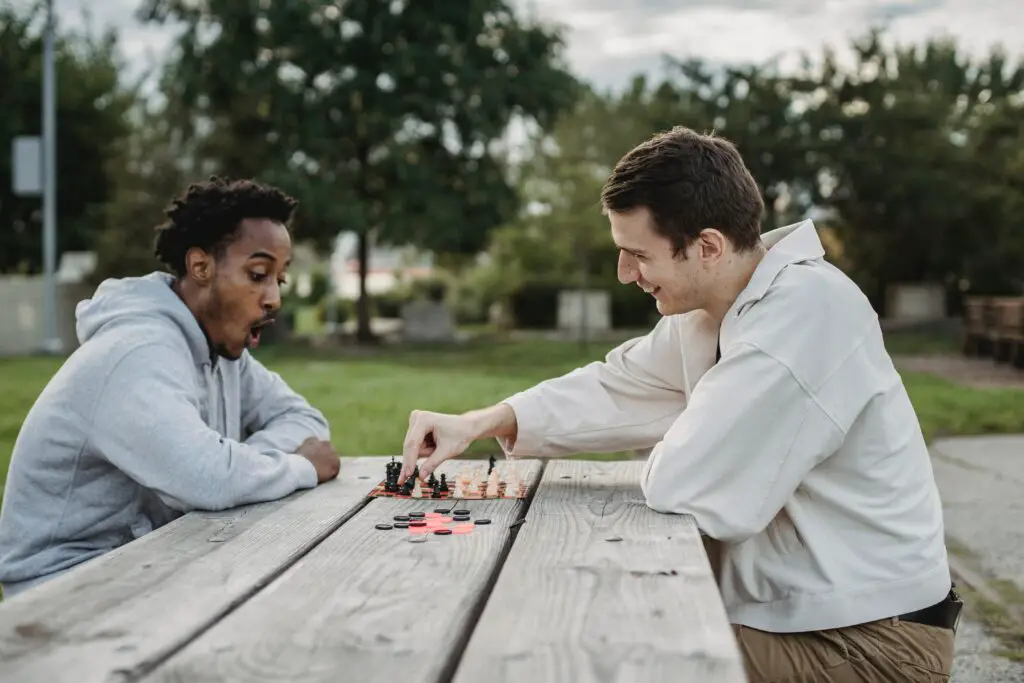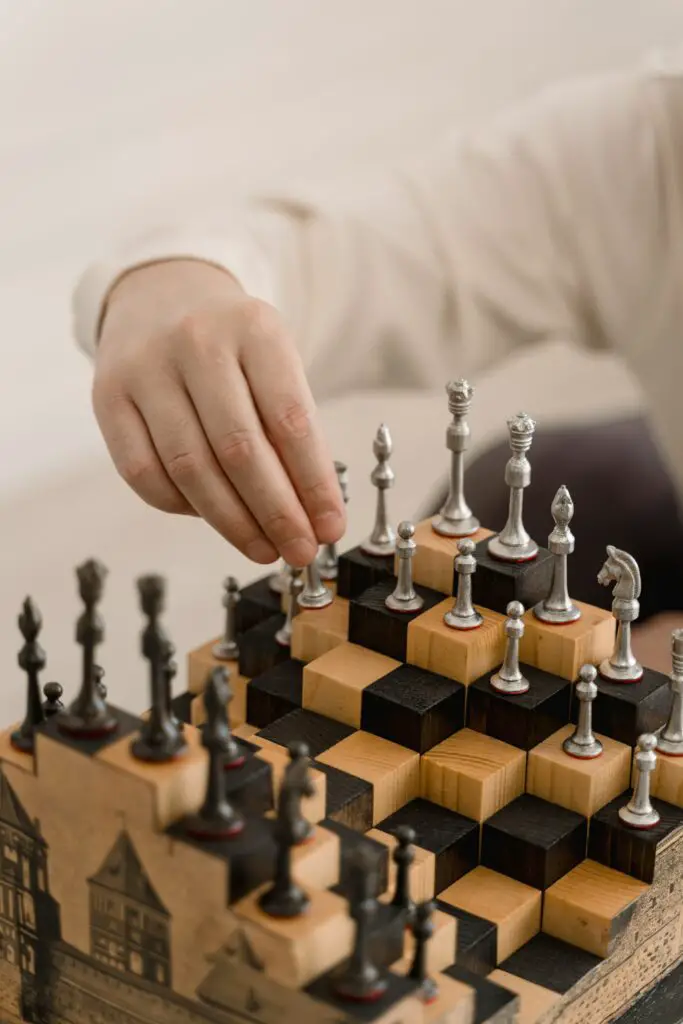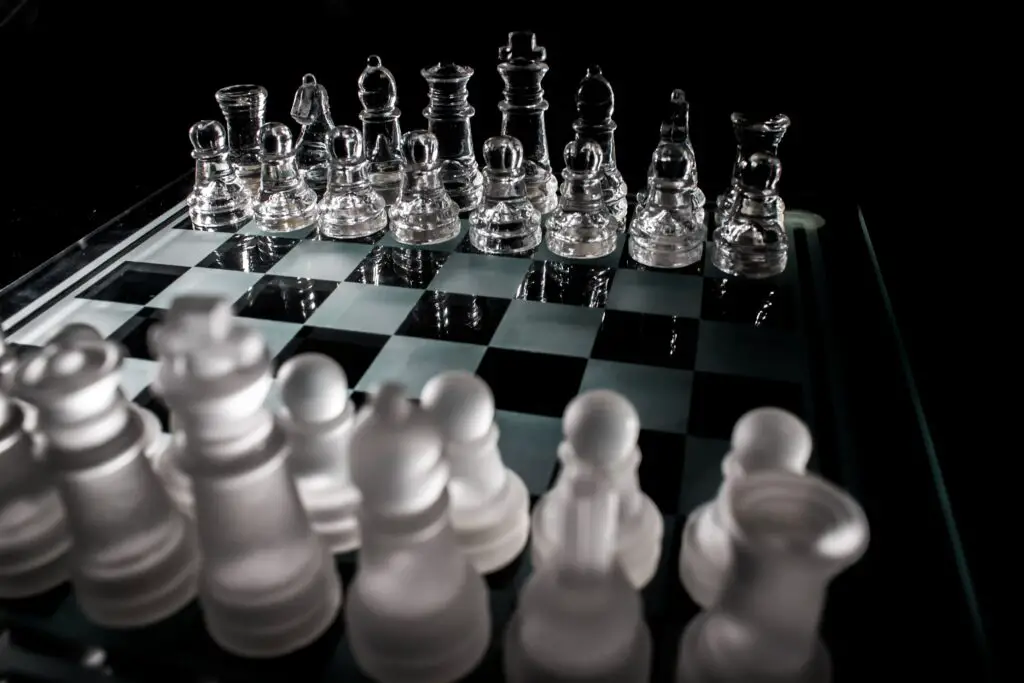Checkmate vs Stalemate
Contents
In the mesmerizing realm of chess, where battles are waged on 64 squares, there are moments that hold the breath of victory or the suspense of a twist. Imagine the intensity as you strategize, plot, and maneuver—leading up to two pivotal outcomes: checkmate and stalemate. Let’s unravel these intriguing moves and dive into the heartbeats of chess that even those new to the game can understand.
What is Checkmate?
Imagine this scenario: your opponent’s king is cornered, with no escape route left. It’s like capturing the crown jewel of the chessboard. Welcome to the world of checkmate—where victory tastes as sweet as honey.
Checkmate Defined
Checkmate occurs when your opponent’s king is in a vulnerable position, threatened by your pieces, and there’s no legal move that can save it. The king is trapped, a prisoner on its own turf. It’s a thrilling checkmate dance, a crescendo of strategy and tactics.
The Triumph of Checkmate
Picture this: your pieces have meticulously surrounded the opponent’s king. The pieces work in harmony, like an orchestra reaching its grand finale. Your opponent’s king is cornered, with no room to move. You call out, “Checkmate!” A wave of exhilaration washes over you as the realization dawns—you’ve won!
Imagine a classic game between grandmasters Garry Kasparov and Anatoly Karpov. In their 1985 match, Kasparov managed to corner Karpov’s king in a dazzling sequence of moves. The audience held their breath as Kasparov declared “Checkmate!” The victory was a masterpiece of strategic planning that showcased the power of checkmate.
What is Stalemate?
Now, let’s flip the script to another captivating chess moment. Imagine a situation where your opponent is out of legal moves. The king is safe, yet helpless—a paradoxical twist known as stalemate.
Decoding Stalemate
Stalemate arises when the player on the move has no legal moves left, and their king isn’t in check. It’s a puzzle of possibilities and limitations, where the board appears to freeze in a moment of suspense.
The Beauty of Stalemate
Imagine a scenario: you’re on the brink of victory, your opponent’s forces have dwindled, and all they have left is their king. You maneuver with precision, gradually closing in on their king. But suddenly, it hits you—your opponent’s king has nowhere to go, and it’s not in check. Stalemate! The game ends in a draw, and a curious mix of surprise and fascination washes over you.
Consider a recent game played by two friends, Sarah and Alex. In the final moments, Sarah had only her king left, while Alex had several pieces. Through skillful positioning, Sarah managed to confine Alex’s king to a corner. The audience watched in awe as the game ended not in victory, but in a dramatic stalemate, leaving both players in admiration of the strategic intricacies of chess.
Strategies Behind the Curtain
The dance of checkmate and the intrigue of stalemate involve more than just moves; they’re crafted with strategy and tactics.
For Checkmate
Achieving checkmate demands precision. It’s like setting a trap, luring your opponent’s king into a position where it’s defenseless. Your pieces orchestrate a symphony of moves, leading to the ultimate crescendo—the checkmate.
Imagine playing a game where your opponent’s king is exposed due to their careless moves. You seize the opportunity, coordinating your pieces to create an inescapable net around the king. The final move seals the deal—checkmate. The satisfaction of outmaneuvering your opponent fills the air.
For Stalemate
Stalemate isn’t a mere accident; it’s a result of calculated moves. It’s a skillful manipulation of the board to limit your opponent’s options. In a desperate situation, it can even be a lifeline—a strategic draw when victory seems elusive.
Imagine a scenario where your opponent has a strong advantage, and victory seems inevitable. Yet, you meticulously position your pieces, avoiding any checks, and creating a scenario where your opponent’s king can’t move without being captured. The game ends in a stalemate, leaving your opponent stunned and you with a triumphant sense of survival.
The Emotional Kaleidoscope
In the world of chess, emotions run wild. The triumphant cry of checkmate fills the air with the sweet scent of victory. It’s the feeling of outsmarting your opponent, of achieving a hard-fought goal. Stalemate, on the other hand, is a rollercoaster of emotions. The twist of fate, the unexpected turn—it keeps you on the edge, reminding you that chess is a game of surprises.
The Power of Learning
Understanding these intricate moves isn’t just about playing a game; it’s about enhancing your chess experience.
Strategic Insight
By comprehending checkmate and stalemate, you gain a deeper understanding of the game’s ebb and flow. It’s like deciphering a secret language that reveals the dynamics of the board.
Enhanced Decision-Making
Studying these outcomes hones your decision-making skills. You learn to predict moves, anticipate outcomes, and maneuver your pieces strategically.
Embracing the Checkmate and Stalemate Symphony
As you traverse the chessboard, remember that each move shapes the destiny of the game. Whether you’re orchestrating a checkmate symphony or navigating the intricate dance of a stalemate, cherish the journey.
Conclusion
In the enchanting world of chess, checkmate and stalemate are more than just moves. They’re moments of triumph and intrigue, of surprise and strategy. As you hone your skills, remember that every move brings you closer to your goal. So, whether you find yourself in the euphoria of a checkmate or the enigma of a stalemate, relish the excitement. The chessboard is your canvas, your strategy is your brush—paint a masterpiece of checkmates and stalemates, and let the game weave its magic.








